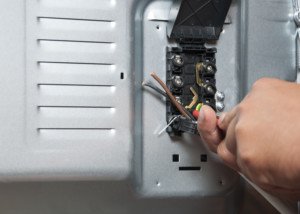Protect Yourself From an Electrical Circuit Overload
Homeowners should avoid electrical circuit overloads at all costs. At best, overloads are inconvenient and temporarily shut off power in your home. At worst, they can lead to damage to your electrical system and expensive repairs. They may even pose shock risks or fire hazards. 
Luckily, you can take simple measures to protect your home from an electrical circuit overload. Read on for the best tips from our residential electricians in San Antonio.
Upgrade Outdated Technology
Today, modern homes have circuit breakers that can detect faults such as an overload. These electrical switches automatically shut off power to safeguard your system and home.
If you have an older home, you may have a fuse box, split bus panel, or pushmatic breaker instead. These structures function much like a circuit breaker but can pose a major fire hazard.
Homes with these older structures are due for an upgrade. As our residential electricians in San Antonio know, modern circuit breakers can better prevent overloads and keep your family safe.
Familiarize Yourself With Your Circuit Breaker
Even if you already have a circuit breaker, you might not be familiar with it. Take some time to understand how it works.
In most homes, you can find the breaker in the garage or a utility closet. The panel features lots of switches, each directing power to different areas of the house. Residential electricians in San Antonio like ourselves mark the panel upon installation so that you know which switch corresponds with what area.
Calculate Amperage
Some appliances need their own dedicated circuit because of their high energy needs. Examples include dryers, washing machines, dishwashers, etc.
For these single-appliance circuits, you don’t necessarily need to worry about the amperage. All you have to do is make sure that you don’t connect any other devices to the circuit.
However, knowing amperage becomes important when you have multiple devices on one circuit. Determine the amperage of one circuit by looking at the unit’s label (in most cases, it will be either 15 or 20 amps). Then, add up the amperage of the devices you plan on connecting (lamps, TVs, computers, etc.). Ensure the total amperage doesn’t exceed 80% of the circuit’s amperage capacity.
Use Extension Cords With Caution
Extension cords don’t provide more power — they just increase the number of devices you can plugin. If you use them excessively, you may end up drawing more power out of your electrical system than it can handle.
Don’t Ignore the Warning Signs
Overloads don’t come without warning. Call residential electricians in San Antonio if you notice signs such as:
• Damaged power cords
• Dimming/flickering lights
• Strange noises coming from the panel (humming, buzzing, etc.)
• Burning smells
• Outlets that are smoking or hot to the touch
Contact Our Residential Electricians in San Antonio
This guide will help you become a more responsible homeowner. But if you need expert help to prevent electrical circuit overloads, contact our residential electricians in San Antonio. We can fix breaker tripping problems, provide regular maintenance, add more outlets to meet your electrical needs, and more.
